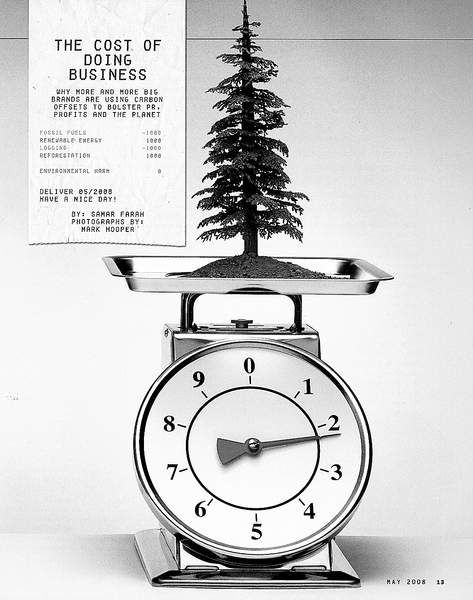Direct mail tries to go green — really
Published 5:00 am Sunday, July 27, 2008

- A U.S. Postal Service effort encourages direct-mail marketers to adopt environmentally friendly practices.
Most marketers readily concede it: getting rid of direct mail — or junk mail, as environmentalists and most recipients call it — would save a lot of trees. But they are not about to render bulk mailings obsolete.
“The return on investment is just too high,” said Jeffrey Horton, marketing supervisor for Kawasaki Motors Corp. USA.
Trending
So a group of direct-marketing companies, along with a handful of their corporate clients, are banding together to make an inherently unsustainable practice at least a little bit greener.
The group calls itself the Green Marketing Coalition, and it includes Microsoft, Washington Mutual and OptimaHealth. Not all the companies involved are big mailers, but they share the sentiment that there should be best-practice guidelines for the direct-mail business, which has been vilified even before global warming became a hot topic.
“This industry just didn’t have any real green standards,” said Spyro Kourtis, president of the Hacker Group, the Seattle direct-marketing company that headed the Green Marketing Coalition. “So we figured we could set some that vendors and clients and others could all live with.”
So far, the coalition’s guidelines are long on earnestness and short on truly new ideas. They include using chlorine-free recycled paper, proofreading marketing materials using Adobe PDF files rather than hard copies and taking advantages of tax benefits that come from certain green initiatives.
‘List hygiene’
The guidelines suggest adhering to higher waste disposal standards and choosing vendors that are committed to recycling. There is also support for “list hygiene” — that is, cleaning out direct-mail lists to remove the names of dead people and others unlikely to respond.
Trending
“Just by improving list hygiene and data management, companies can target better and drastically cut down on advertising waste,” the coalition advises.
The U.S. Postal Service is on the case, too. It has taken out a trademark on the term “environMAIList” to refer to marketers that adopt greener mail practices and try to make direct marketing more eco-friendly.
On its Web site — right after it notes that every dollar spent on direct mail returns almost $12 in sales — the Postal Service now lists green tips for marketers, like letting people easily opt out of mailings, using water-based inks and recycled materials, and encouraging customers to recycle the mailing after reading it.
In May, the Postal Service mailed — on recycled paper, of course — general tips on greening up direct mail to about 100,000 companies. Those who send back a card asking for more information will get an organic cotton T-shirt and a handbook giving more details on how to adopt greener practices.
The Postal Service has also been sending press kits to reporters to spur coverage of its green push. Part of the pitch says: “Although direct-mail accounts for only 2.4 percent of landfill waste, many opportunities are available to lessen its environmental impact even more.”
Any effect?
Both the post office and the Green Marketing Coalition have stopped short of setting concrete goals. The coalition’s guidelines, listed at greenmarketing coalition.com, do not specify any measurable milestones or target dates for action.
“You don’t want to scare companies away from joining because they fear some stringent regulation,” said Daniel Lenhart, facilities supervisor for Kawasaki Motors, a founding member of the coalition.
The vagueness of the recommendations has not endeared the coalition to environmentalists, although many are more amused than outraged by the concept of direct mailers painting themselves green.
“It’s hard to argue against any well-intentioned effort to use more recycled paper, but the idea of greening junk mail is still a bit like putting lipstick on a pig,” said Todd Paglia, executive director of ForestEthics, a nonprofit organization dedicated to protecting forests.
Skepticism
Michael Brune, executive director of the Rainforest Action Network, is similarly skeptical. He is impressed that the coalition cites the Forest Stewardship Council’s standards for protecting forests, rather than the less stringent Sustainable Forestry Initiative that the logging industry has voluntarily adopted.
“At least they are talking about the gold standard,” he said.
Still, Brune faults the group for what he called a lack of boldness. “Their guidelines are just bland, noncontroversial assertions, without teeth or concrete timelines or any real specificity for progress,” he said. “So forgive us for not throwing a victory party just yet.”
Direct marketers, however, say they see no need to apologize for their industry’s environmental track record. Most direct mailers have learned to aim their material at people most likely to respond, they contend, and thus are sending out much less mail. And most are using at least a small percentage of recycled paper.
“Our industry employs quite a few people, generates billions of dollars in revenues for the economy and a huge number of donations for nonprofits,” said Richard E. Bushee III, president of MSP, a direct mailer. “Yes, the guidelines are a bit loose, and yes, we need to put numbers to them soon. But at least we’re showing the world that we’re talking about this, that we think it’s important.”
Most of the founding members say that they joined the coalition expressly to exchange green ideas with marketers in industries other than their own.
“We already recycle, we encourage carpooling, we have all sorts of green practices,” said Lenhart of Kawasaki Motors. “We didn’t join the coalition for a new set of rules, but because it gives us an opportunity to bounce ideas off like-minded people.”
The coalition held its first formal meeting by conference call in the spring, and members said they did come away with new ideas.
Bushee picked up a tip on more efficient lighting systems for his warehouses. Lenhart heard about a new kind of paper with higher recycled content.
Tom Berquist, senior vice president of member strategies for the Boeing Employees Credit Union, learned how to view mailers electronically, which cuts down on paper and ink and reduces the need to drive to the printing plant.
“We know that the guidelines need to evolve into specific recommendations and goals,” Berquist said. “And yes, we know that eventually, we have to get paper out of the equation altogether.”







